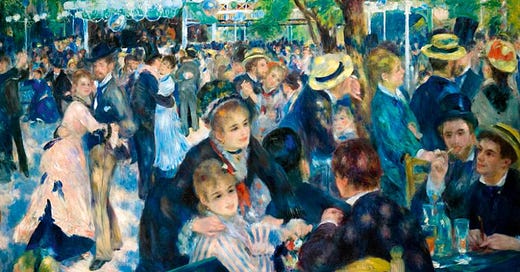Dear friends,
I recently stumbled upon some inspiring words by Swami Chinmayananda. Swami Chinmayananda (Gurudev) was a journalist turned ascetic from India, who catapulted the ancient spiritual discipline of Vedanta into global attention via his magnetic talks and Chinmaya Mission centers of learning.
The Context: Letter from a Disciple
The full text of Gurudev’s inspiring response to a fellow disciple is below. In June 1986, Gurudev received a letter from Mr. Nilkanth (Neil) Bhatt, an architect by training from Richmond, Virginia. Mr. Bhatt was perplexed. He explained that while reading Self Unfoldment—a key guide to life from the Vedantic tradition—with his study group, members were stuck unproductively at one thought: we are so conditioned by our karma or our past actions per Sanatana Dharma—or Hinduism as it is popularly called— isn’t it useless to make efforts in the present?
Response: The Present is the Father of the Future
Gurudev read the query and offered this beautiful response:
“The Present is an imaginary line wherein the Future merges with the Past. Therefore, at this threshold (Present), both past and future meet such as the obverse and reverse of a coin.
The Present is the “effect” of the past – you are the son of your father. But at the same time, you, the Present, is also the “Cause” for the future – you are father of your sons!
No doubt, the Past conditions the Present, but at the same time, the Present is the father of the Future – because in a future period of time (in 1999), the present (1986) will be recorded as the past. THINK…
Therefore: “What we meet in life” is Prarabhda, ordered by our PAST; we are helpless. But “How we meet what we meet” is called Purushartha; self-efforts; this limited freedom, when employed intelligently, makes all the difference.
This extra “freedom” is because the mind finds this “elbow room” because it is in fact nothing but the Supreme Perfections, Brahman, Pure Consciousness.”
How We Best Meet Life
It’s via Purushartha or self efforts, explains Gurudev. We are not the victims of our past, but architects of our future. How refreshingly optimistic to hear that!
These words will undoubtedly speak to many of us who might feel overwhelmed or helpless from time to time as life deals us a heavy hand. This could be from a loss, a separation, or simply feeling stuck by a certain behavior causing us grief, like eating too many sweets, not exercising enough, or yelling too much. We arrive at a point where we question our ability to change and perhaps even the futility of changing.
However, the reality is, there’s really no limit to what we can do when we don’t let our past weigh us down, and when we approach the future as a blank slate of possibilities.
Where does the Brahman or the Divine Consciousness fit into this scheme of things?
The Divine Consciousness is that faculty within us which allows us to stay in the present, and that’s how we chisel our future—by staying in the present. That’s why Gurudev calls the Divine Consciousness or Brahman our “elbow room” or “freedom”. When we stay in the present, our Mind is held tight with no thoughts, and we become a sakshi or a witness to life. As a sakshi, we observe, we don’t react. It is precisely this wriggle room that allows us to distance ourselves from the past and enables oour Self to make noble efforts to create a future of our choice. That is why being in the present or being a sakshi is God in Vedanta.
gatir bhartā prabhuḥ sākṣhī nivāsaḥ śharaṇaṁ suhṛit
prabhavaḥ pralayaḥ sthānaṁ nidhānaṁ bījam avyayam
(Chapter 9, verse 18, Bhagavad Geeta)
Here “prabhuh” or God, is referred to as the “sakshi” or the witness.
A Surprise Ending: We Believe what We Believe!
So, what happened after the study group read the letter sent to them by Swami Chinmayananda? Mr. Bhatt explains that when the group discussed Gurudev’s response, both believers in Purushartha (self efforts) and believers in Prarabdha (past actions) felt that his response affirmed their belief «smile»! When Mr. Bhatt met Gurudev a few months after that discussion, he shared with him the reaction of the study group. Swami Chinmayananda laughed and said:
“This Swami deserves a pat on his back for reaffirming scriptures. The scriptures are the mirrors to our minds. We see in the scriptures what we have in our minds.”
In other words, everyone interpreted the letter as they saw appropriate! Some moved on to believing, arguably fatalistically, that past karma dictates our actions. Others held on doggedly to the belief that the present is what chisels the future. I err of course, on the latter side, if you have not guessed already!
In the end, it’s what we choose to believe in that charts the course of our life. Let’s give ourselves the present of being in the present and create a future we fully own, carved from our own divinity within. That’s how I like to meet life.
Meaningfully yours,
Anu Prabhala
PS: Letter from Gurudev reproduced with permission from Mr. Bhatt and the Chinmaya Mahasamadhi Camp staff.
PPS: Talking about taking reins of our life and optimism, Le Bal du Moulin de la Galette (1876, Musée d’Orsay) below by 19th century French artist, Pierre-Auguste Renoir, depicts optimism par excellence for me. From the movement of the people ready to dance, the cheer jumping out at us, and the dazzle of light and shadows captured so beautifully, the painting seems poised for happiness! The painting depicts a typical Sunday afternoon at the Moulin de la Galette in the district of Montmartre in Paris. In the late 19th century, working class Parisians would dress up and spend time there dancing, drinking, and eating galettes into the evening.






Well written!! Thanks for food for thought!